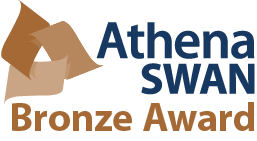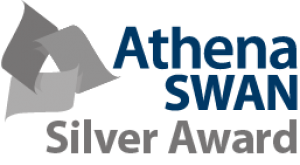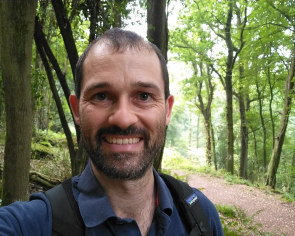You are here
- Home
- Dr Philip Wheeler
Dr Philip Wheeler
Professional biography
I am an ecologist and conservation biologist in the School of Environment, Earth and Ecosystem Sciences interested in a wide range of conservation and environmental management questions. In the past I have been interested in tackling real-world conservation problems, particularly by investigating landscape-scale processes, but I am now increasingly interested in urban environments, and particularly urban trees. My areas of teaching and research are quite varied, ranging from species ecology to wildlife monitoring and conservation, quantitative methods and spatial modelling.
I joined the Open University in 2015. Prior to coming to the OU I was at the University of Hull's Centre for Environmental and Marine Sciences.
Research interests
Urban trees and Citizen Science.
I lead the OU's citizen science project Treezilla: the Monster Map of Trees aiming to engage members of the public, local authorities and voluntary organisations in mapping and measuring urban trees in the UK. This work is a collaboration with Forest Research's Urban Forest Research Group and Treeconomics and has been supported by NERC and InnovateUK.
Ecology of Brown Hares and Rabbits in agroecosystems.
Work investigating the distribution and ecology of these species which are of conservation interest as well as agricultural pests. Thus work is in collaboration with the Animal and Plant Health Agency, York.
Ecology and conservation of large tropical forest mammals.
Work on species including the highly endangered anoa, a dwarf buffalo endemic to the Indonesian island of Sulawesi, with perhaps only 3000 individuals in the wild, and Baird's Tapir in Honduras. This work informs activities of the IUCN Asian Wild Cattle Specialist Group and Tapir Specialist Group.
I am fortunate to have a brilliant group of research students working with me on projects including citizen science and urban trees, urban woodland biodiversity and other areas of biodiversity and conservation. I am always looking to take on suitably qualified research students in any of the above areas. If you are interested, contact me to discuss applications and possibilities for funding.
Teaching interests
I teach a wide range of subjects across ecology and environmental science. I am the module team chair for the OU's core Environmental Science module (S206/SXF206) and input into SDT306 Environment: responding to change.
Impact and engagement
My research work is very applied and several previous and current projects have inputted into active wildlife monitoring and conservation, notably guidelines on surveying brown and mountain hares for ecological impact assessments and information for conservation action plans for tropical forest large mammals.
My current work on engaging people in monitoring and mapping urban trees and their ecosystem services works closely with large numbers of individual volunteers, groups and the public and private sectors to improve the understanding of the value of urban trees and promote their conservation.
I have worked as academic consultant on two OU-BBC landmark natural history series: A Perfect Planet (2021) and Wild Isles (2023).
International links
I have worked extensively with partners and colleagues across the globe, primarily in south east Asia and Indonesia in particular.
Externally funded projects
TreeView: developing new capacity for the remote sensing of UK trees and forests
| Role | Start date | End date | Funding source |
|---|---|---|---|
| Co-investigator | 01 Nov 2020 | 31 Mar 2021 | UKSA UK Space Agency |
Tree and forest climate interactions are fundamental to a sustainable future and societal wellbeing. Trees are at the heart of the current political discourse, and the UK government is preparing to launch a strategy to accelerate tree planting and improve the management of existing trees and woodlands. The world is becoming increasingly urbanised, and urban trees are well recognised for their environmental, health and wellbeing benefits. Trees across the rural and urban landscape are going to play a central role as we move towards a net-zero emissions economy. The ability to measure, monitor and map the health and status of the UK’s trees is therefore essential to the UK’s future treescape and urban green infrastructure. Currently, tree identification can be achieved with high spatial resolution panchromatic imagery, but we need to go beyond this. We need to be able to not only map species within mixed assemblages, but also characterise the health and size of the trees. Furthermore, we need to be able to measure the particular configurations of urban environments and the small-scale but widespread plantings that are likely to feature prominently in planting programmes. Importantly, we need to be able to monitor changes over time – to quantify carbon sequestration; assess vulnerability and detect the onset of climatic stress or disease outbreak to facilitate early intervention; and to measure the success and monitor compliance of tree planting programmes. This requires going to the spatial scale of tree crowns but capturing the spectral information that will provide the information for classification and characterisation. Advances in both sensors and process understanding is closing the gap between canopy reflectance properties and its functional meaning, opening the possibility of detailed studies at the scale of individual trees and their responses to global change from space. Species identification and mapping has been demonstrated from airborne hyperspectral sensors, enabling species mapping across forests and urban areas. In this project we will push the limits of leading CMOS TDI sensors and optimise system configuration to develop a new platform for the classification, characterisation and monitoring of trees across urban and rural landscapes. Band selection will provide information on both plant health and will feed into classification algorithms developed from extensive ground truthing data. In this pathfinder phase of the project, our objectives are to (could include): 1. Refine band selection based on key vegetation characterisation indices and sensor constraints (from starting point of bands a,b,..f) 2. Develop classification algorithms from airborne hyperspectral data and extensive ground-truthing data sets. 3. Collect new airborne data specifically for one target market: railways 4. Produce the system requirements document for TreeView 5. Produce the mission requirements document for TreeView 6. Perform market analysis of end users across local and national government, commercial and research sectors | |||
[SPRINT] High spatial and spectral resolution tree mapping and identification
| Role | Start date | End date | Funding source |
|---|---|---|---|
| Co-investigator | 01 May 2020 | 30 Apr 2021 | Research England |
We will combine measurements across scales from ground-level, UAV and airborne platforms of urban and woodland environments. Using high-resolution imaging and non-imaging spectroscopy we will develop training data for the identification and physiological characterisation of tree species in both urban and non-urban environments. The ultimate goal is to develop an approach that can be applied to emerging very high resolution satellite platforms for monitoring trees and forests from space. | |||
Integrating technological solutions to modernise the study and assessment of coral reefs
| Role | Start date | End date | Funding source |
|---|---|---|---|
| Lead | 01 Feb 2020 | 31 Jan 2028 | Operation Wallacea Ltd |
PhD project looking at technological solutions to mapping and monitoring coral reef fish populations | |||
Valuing green Infrastructure through Tree Assessment tooLs (VITAL)
| Role | Start date | End date | Funding source |
|---|---|---|---|
| Lead | 01 Jan 2016 | 31 Dec 2017 | NERC Natural Environment Research Council |
Trees provide a wide range of ecosystem services including provision of wood and timber, regulation of water quality and quantity, carbon sequestration and storage, and cooling local air temperatures, mitigating air pollution, supporting biodiversity, as well as their cultural and public and amenity values. They are a vital component of green infrastructure. Services provided by forest ecosystems are well documented, and a number of tools - including the OU's citizen science based tree mapping Treezilla (www.treezilla.org and i-Tree (www.itreetools.org ) - have been developed to help assess the value of trees in urban environments to support the advocacy of trees in towns and cities, as well as to encourage budgetary support in the maintenance and expansion of urban forests. This project aims to develop these systems with a focus on Treezilla to provide better UK-based data. Our goal is to deliver a platform for valuing trees usable by ordinary citizens, environmental and planning professionals which leads to a broader understanding of the value of green infrastructure to society and which promotes investment and support for green infrastructure amongst individual citizens and organisations. | |||
Restoration of the long-spined sea urchin PhD studentship
| Role | Start date | End date | Funding source |
|---|---|---|---|
| Lead | 01 Oct 2015 | 30 Sep 2018 | Operation Wallacea Ltd |
The long-spined sea urchin Diadema antillarum is a keystone species in Caribbean coral reefs. Its loss has led to dramatic changes in the ecology of Caribbean reef systems. This project investigates the potential for restoration of Diadema to Caribbean coral reefs in Honduras. | |||
Resource Recovery and Remediation of Alkaline Wastes (Transfer in)
| Role | Start date | End date | Funding source |
|---|---|---|---|
| Lead | 02 Feb 2015 | 30 Aug 2017 | NERC Natural Environment Research Council |
Resource Recovery and Remediation of Alkaline Wastes | |||
Publications
Journal articles
Influence of canopy structural complexity on urban woodland butterfly species richness (2024-10)
Neal, Willow; Araya, Yoseph and Wheeler, Philip M.
Journal of Insect Conservation, 28 (pp. 1015-1062)
Highest densities of mountain hares (Lepus timidus) associated with ecologically restored bog but not grouse moorland management (2022-04)
Bedson, Carlos P. E.; Wheeler, Philip M.; Reid, Neil; Harris, Wilson Edwin; Mallon, David; Caporn, Simon and Preziosi, Richard
Ecology and Evolution, 12(4) (e8744)
The ecological importance of habitat complexity to the Caribbean coral reef herbivore Diadema antillarum: three lines of evidence (2021-04-30)
Bodmer, M. D. V.; Wheeler, P. M.; Anand, P.; Cameron, S. E.; Hintikka, Sanni; Cai, W.; Borcsok, A. O. and Exton, D. A.
Scientific reports, 11, Article 9382
Teaching and learning in ecology: a horizon scan of emerging challenges and solutions (2021-01)
Cooke, Julia; Araya, Yoseph; Bacon, Karen L.; Bagniewska, Joanna M.; Batty, Lesley; Bishop, Tom R.; Burns, Moya; Charalambous, Magda; Daversa, David R.; Dougherty, Liam R.; Dyson, Miranda; Fisher, Adam M.; Forman, Dan; Garcia, Cristina; Harney, Ewan; Hesselberg, Thomas; John, Elizabeth A; Knell, Rob; Maseyk, Kadmiel; Mauchline, Alice L.; Peacock, Julie; Pernetta, Angelo P.; Pritchard, Jeremy; Sutherland, William J.; Thomas, Rebecca L.; Tigar, Barbara; Wheeler, Philip; White, Rachel L.; Worsfold, Nicholas T. and Lewis, Zenobia
Oikos, 130(1) (pp. 15-28)
Estimating density of mountain hares using distance sampling: a comparison of daylight visual surveys, night-time thermal imaging and camera traps (2021)
Bedson, Carlos P. E.; Thomas, Lowri; Wheeler, Philip M.; Reid, Neil; Harris, W. Edwin; Lloyd, Huw; Mallon, David and Preziosi, Richard
Wildlife Biology, 2021, Article wlb.00802(3)
Landscape connectivity and spatial prioritization in an urbanising world: A network analysis approach for a threatened amphibian (2019-09)
Matos, Cátia; Petrovan, Silviu O.; Wheeler, Philip M. and Ward, Alastair I.
Biological Conservation, 237 (pp. 238-247)
Short-term movements and behaviour govern the use of road mitigation measures by a protected amphibian (2019-06-04)
Matos, C.; Petrovan, S. O.; Wheeler, Philip and Ward, A. I.
Animal Conservation, 22(3) (pp. 285-296)
Careful considerations are required when analysing mammal citizen science data – A response to Massimino et al (2019-04)
Wheeler, Philip M.; Ward, Alastair I.; Smith, Graham C.; Croft, Simon and Petrovan, Silviu O.
Biological Conservation, 232 (pp. 274-275)
Distribution and status of threatened and endemic marsupials on the offshore islands of south-east Sulawesi, Indonesia (2019)
Martin, Thomas E.; Monkhouse, Joseph; O'Connell, Darren P.; Analuddin, Kangkuso; Karya, Adi; Priston, Nancy E. C.; Palmer, Charlotte A.; Harrison, Barnabas; Baddams, Jack; Mustari, Abdul H.; Wheeler, Philip M. and Tosh, David G.
Australian Mammalogy, 41(1) (pp. 76-81)
Detecting the elusive cost of parasites on fig seed production (2018-07)
Segar, Simon T.; Mardiastuti, Ani; Wheeler, Philip M. and Cook, James M.
Acta Oecologica, 90 (pp. 69-74)
Dietary niche partitioning between sympatric brown hares and rabbits (2017-09)
Lush, L.; Ward, A. I. and Wheeler, P.
Journal of Zoology, 303(1) (pp. 36-45)
Can aggregate quarry silt lagoons provide resources for wading birds? (2017-08)
Day, George; Mayes, William M.; Wheeler, Philip M. and Hull, Susan L.
Ecological Engineering, 105 (pp. 189-197)
Bioenergy crops and farmland biodiversity: benefits and limitations are scale-dependant for a declining mammal, the brown hare (2017-06)
Petrovan, Silviu O.; Dixie, John; Yapp, Emma and Wheeler, Philip M.
European Journal of Wildlife Research, 63, Article 49(3)
Facilitating permeability of landscapes impacted by roads for protected amphibians: patterns of movement for the great crested newt (2017-02-28)
Matos, Cátia; Petrovan, Silviu; Ward, Alastair I. and Wheeler, Philip
PeerJ, 5, Article e2922
Interacting effects of temperature, habitat and phenotype on predator avoidance behaviour in Diadema antillarum: implications for restorative conservation (2017-02-27)
Bodmer, M. D. V.; Wheeler, P. M.; Hendrix, A. M.; Cesarano, D. N.; East, A. S. and Exton, D. A.
Marine Ecology Progress Series, 566 (pp. 105-115)
Artificial reefs and marine protected areas: a study in willingness to pay to access Folkestone Marine Reserve, Barbados, West Indies (2016-07-20)
Kirkbride-Smith, Anne E.; Wheeler, Philip M. and Johnson, Magnus L.
PeerJ, 4, Article e2175
Use of tri-axial accelerometers to assess terrestrial mammal behaviour in the wild (2016-04)
Lush, L.; Ellwood, S.; Markham, A.; Ward, A. I. and Wheeler, P.
Journal of Zoology, 298(4) (pp. 257-265)
Opposing effects of agricultural intensification on two ecologically similar species (2014-07-01)
Lush, Lucy; Ward, Alastair I. and Wheeler, Philip
Agriculture, Ecosystems & Environment, 192 (pp. 61-66)
Effects of sheep grazing on abundance and predators of field vole (Microtus agrestis) in upland Britain (2008-01-01)
Wheeler, Philip
Agriculture, Ecosystems & Environment, 123(1-3) (pp. 49-55)
Conference items
Maximising the benefit of urban woodlands for butterflies (2023)
Neal, Willow; Araya, Yoseph and Wheeler, Philip
In : British Ecological Society Annual Meeting 2023 (12-15 Dec 2023, Belfast, Northern Ireland, UK)
The plant communities of urban ancient woodlands: Post-urbanisation changes in ground flora species composition. (2023)
Woo, Holly; Wheeler, Philip; Davies, Sarah-Jane and Maseyk, Kadmiel
In : British Ecological Society Trees for Climate Change, Biodiversity and People symposium. (28-29 Jun 2023, Canterbury, UK)
Urban Woodland Butterfly Habitat Suitability (2022-12-19)
Neal, Willow; Araya, Yoseph and Wheeler, Philip
In : British Ecological Society (BES) Annual Meeting 2022 (18-21 Dec 2022, EICC, Edinburgh, UK)
Urban Ancient Woodland in Britain’s Modern Landscape (2021)
Woo, Holly; Davies, Sarah-Jane; Maseyk, Kadmiel and Wheeler, Philip
In : Ecology Across Borders 2021 (12-15 Dec 2021, Liverpool, UK)
Broadcasting from the field: enabling student-led investigations by distance (2020)
Cooke, Julia; Wheeler, Philip; Maseyk, Kadmiel; Davies, Sarah-Jane; Collins, Trevor; Bradshaw, Kate; Hawkridge, Ben; Valentine, Chris and Morgan, Gwyneth
In : Enhancing Fieldwork Learning 2020 (8 Sep 2020, Online, United Kingdom)
Live, interactive fieldcasts: How flexible and robust is our technology and teaching design to multiple changes? (2019)
Cooke, Julia; Wheeler, Philip; Maseyk, Kadmiel; Davies, Sarah and Collins, Trevor
In : The 8 th eSTEeM Annual Conference 2019 - STEM Scholarship: From Inquiry to Implementation (8-9 May 2019, The Open University, Milton Keynes, UK)
Widening access to fieldwork for large numbers of students with interactive livecasts (2018)
Cooke, Julia; Wheeler, Phil; Collins, Trevor; Maseyk, Kadmiel and Davies, Sarah
In : Enhancing Fieldwork Learning Showcase 2018 (3-4 Sep 2018, University of Leeds, Leeds, United Kingdom)
Live field broadcasts: Moving from optional additions to required assessment (2018)
Collins, Trevor; Cooke, Julia; Wheeler, Philip; Maseyk, Kadmiel and Robson, Julie
In : The 7th eSTEeM Annual Conference 2018 - STEM Futures: Delivering Excellence Through Scholarship (25-26 Apr 2018, The Open University, Milton Keynes, UK)
Fieldscapes – Creating and Evaluating a 3D Virtual Field Trip System (2017-06-29)
Burden, D.J.H.; Argles, T.; Minocha, S.; Rock, J.; Tilling, S. and Wheeler, P.
In : The Immersive Learning Research Network Conference - iLRN 2017 (26-29 Jun 2017, Coimbra, Portugal) (pp. 18-29)
Evaluating remote access to fieldwork with interactive fieldcasts for distance learning students (2017)
Robson, Julie; Cooke, Julia; Wheeler, Philip; Maseyk, Kadmiel and Collins, Trevor
In : The 6th eSTEeM Annual Conference (25-26 Apr 2017, The Open University, Walton Hall, Milton Keynes)
Using a citizen science tool to model the health benefits of roadside trees (2017)
Goodenough, Jessica; Ansine, Janice and Wheeler, Philip
In : Trees, People and the Built Environment 3 (TPBE3) Conference (5-6 Apr 2017, University of Birmingham)
Enhancing ecological fieldwork with Virtual Reality (2016-12)
Tilling, Steve; Wheeler, Philip; Burden, David and Argles, Thomas
In : British Ecological Society Annual Meeting 2016 (11-14 Dec 2016, Liverpool, UK)
Widening access to fieldwork with interactive livecasts (2016-09)
Cooke, Julia; Wheeler, Philip; Maseyk, Kadmiel and Collins, Trevor
In : Enhancing Fieldwork Learning Showcase 2016 (12-13 Sep 2016, Reading, UK)
Other
Individual Tree Data Standard (2021-10-14)
Handley, Phillip; Walker, Hannah; Ansine, Janice; Baden, Richard; Craig, Ian; Dewhurst-Richman, Nadia; Doick, Kieron; Fay, Luke; Mackie, Ewan; Parratt, Matt; Perez-Sierra, Ana; Sparrow, Kate and Wheeler, Philip
Forest Research, the Research Agency of the Forestry Commission, Farnham, UK.
15 Practical Tips for Online Teaching (2020)
Cooke, Julia; Wheeler, Philip and Davies, Sarah-Jane
The British Ecological Society, London, UK.




